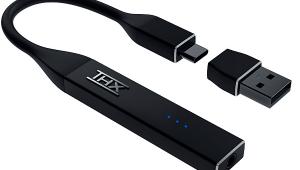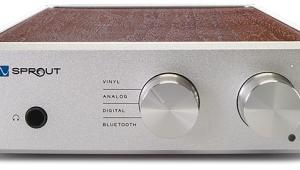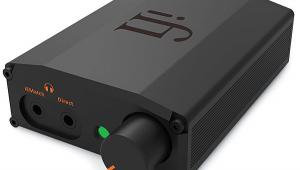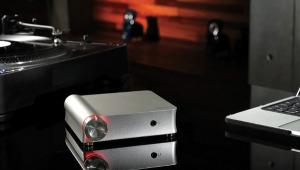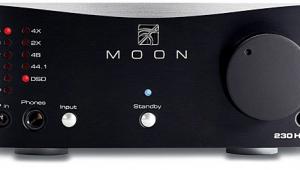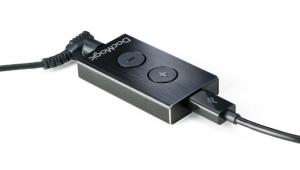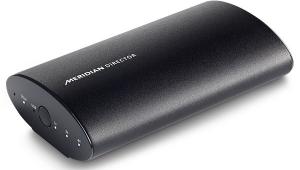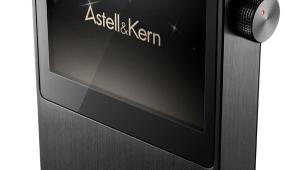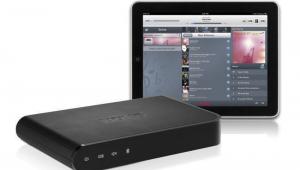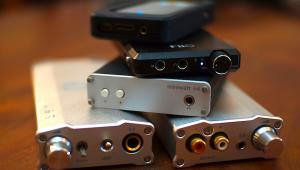TEAC AI-503 Integrated Amplifier/DAC Review

AT A GLANCE
Plus
Clear, crisp sound
Cool, retro design
Can drive efficient speakers to reasonably loud levels
Minus
Hi-res Bluetooth requires LDAC source
Pricey
THE VERDICT
TEAC’s stylish, computer-friendly integrated amp is a great option for both desktop and living-room listening.
Integrated amplifiers designed for use both on the desktop and in the listening room are a niche category that we’ve looked at before, most recently in reviews of Elac’s $699 Element EA101EQ-G and Cary Audio’s AiOS. But of all the hi-fi manufacturers working this space, TEAC is the one that embraces it most enthusiastically. The company offers a full lineup of compact, desktop-friendly integrated amps, including the new AI-503 ($1,000), a model that combines an asynchronous USB input (for a computer), a dedicated headphone amp, and hi-res-capable Bluetooth streaming (more on that in a bit).
The key to the AI-503’s compactness is its use of a high-efficiency Class D amplifier from Denmark’s ICEpower, which eliminates the need for bulky heatsinks. Power is spec’d by TEAC at 2 x 30 watts (8 ohms), and the amp is compatible with both 8-ohm and 4-ohm speakers.

Separate Verita AK4490 digital-to-analog converters are used for the left and right channels, with support for up to 384-kilohertz/32-bit PCM and 11.2-megahertz DSD. When in asynchronous USB mode, the DACs are driven by separate clocks that operate at 44.1 and 48 kHz, as well as multiples of those frequencies for hi-res audio playback. Along with its dual DACs, the preamp section uses a fully balanced, dual-mono circuit design that, according to TEAC, brings particular benefits to headphone listening.
The AI-503’s Bluetooth streaming capability is worth calling out for its support of LDAC, a coding technology developed by Sony that allows for wireless transmission of up to 96-kHz/24-bit original files, resulting in the claimed equivalent of hi-res audio. Like other Bluetooth implementations, LDAC uses lossy compression, although its 990-kilobit-per-second maximum data-transmission rate in Quality priority mode is three times what you get with regular Bluetooth. At present, LDAC-compatible sources are limited to Sony’s hi-res-capable Walkman digital audio players and Xperia smartphones, so to benefit from the TEAC’s pumped-up Bluetooth, you’ll need to use one of those devices. Fortunately, the high-quality AptX Bluetooth codec is also supported, as are the lower-fidelity AAC and SBC codecs.
Now that I’ve covered what’s inside the AI-503, it’s time we talk about its stunning, jewel-like exterior. My review sample came in a silver brushed-aluminum case with rack-mount-style handles on the front. (An all-black version is also available; both are substantially narrower than standard 19-inch rack mount width.) A pair of backlit meters track signal levels independently for the left and right outputs, and they’re flanked by aluminum dials for input selection and volume adjustment. In a slick design touch, the volume dial is motorized, moving in response to remote control commands. Other front-panel features include a power on/off switch, a 3.5mm analog input, and a four-pole 3.5mm headphone jack with a high/low gain select button to tailor the headphone amp’s output for cans with a range of impedances.
Besides its USB Type B computer port, the AI-503 provides RCA analog and coaxial and optical digital inputs on its back panel. There’s also a preamp output for future amp upgrades, as well as a connection for the removable power cord. If it had a phono input, too, that would almost put the AI-503 over the top, but in its absence you can always use an external phono preamp or a turntable with a built-in phono stage to get that capability.
TEAC’s sturdy, comfortably sized remote control has an aluminum surface that matches the exterior of the amp/DAC’s silver version, and it provides a clean layout of same-sized rubber-coated buttons. Input select buttons are located up top, while the volume adjustment and mute buttons are at the bottom for easy access. (There are a few other buttons that, confusingly, have no corresponding function on the AI-503.) Controls to dim the front-panel meters and adjust the filter characteristics of the DACs can be found in the remote’s middle section.

